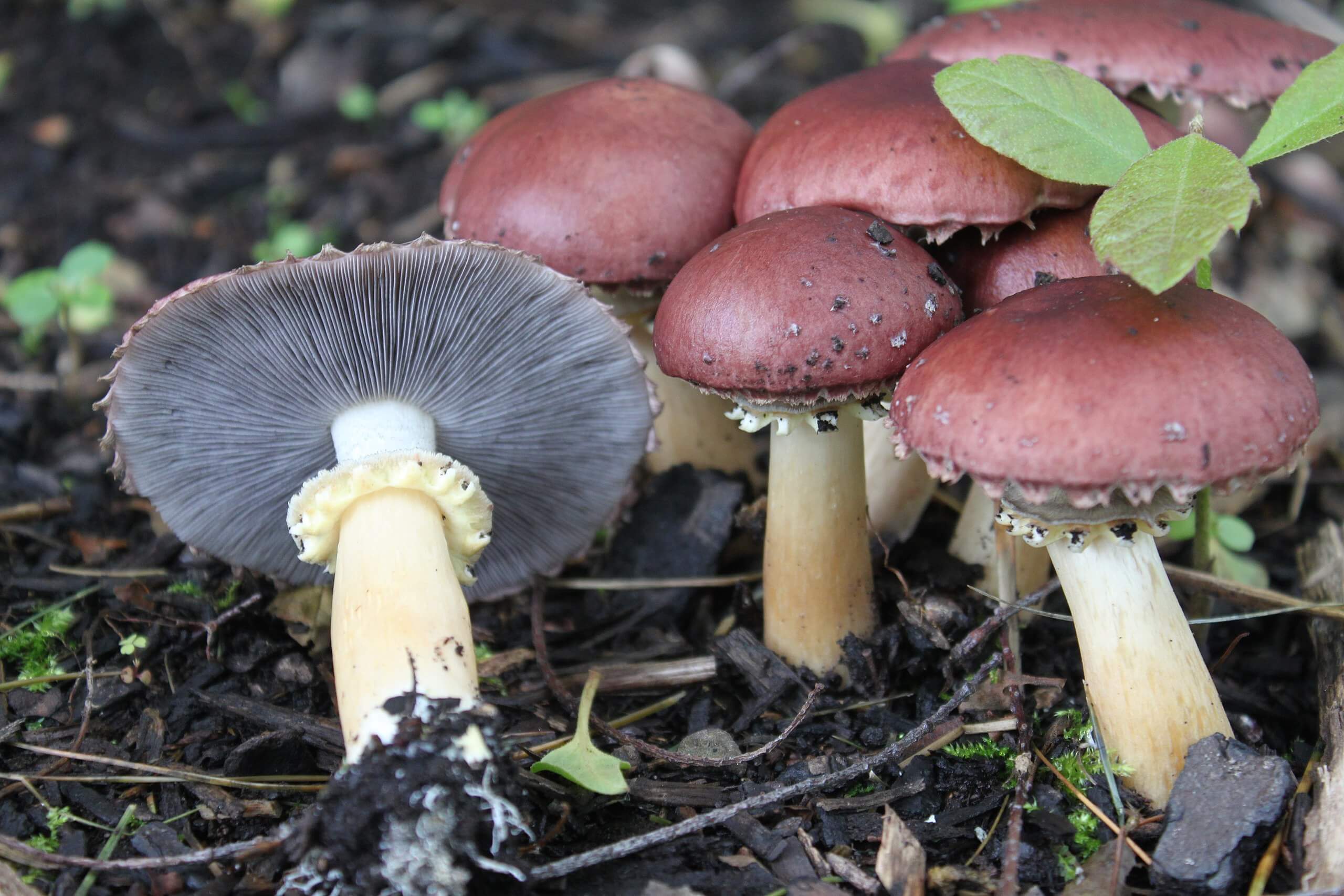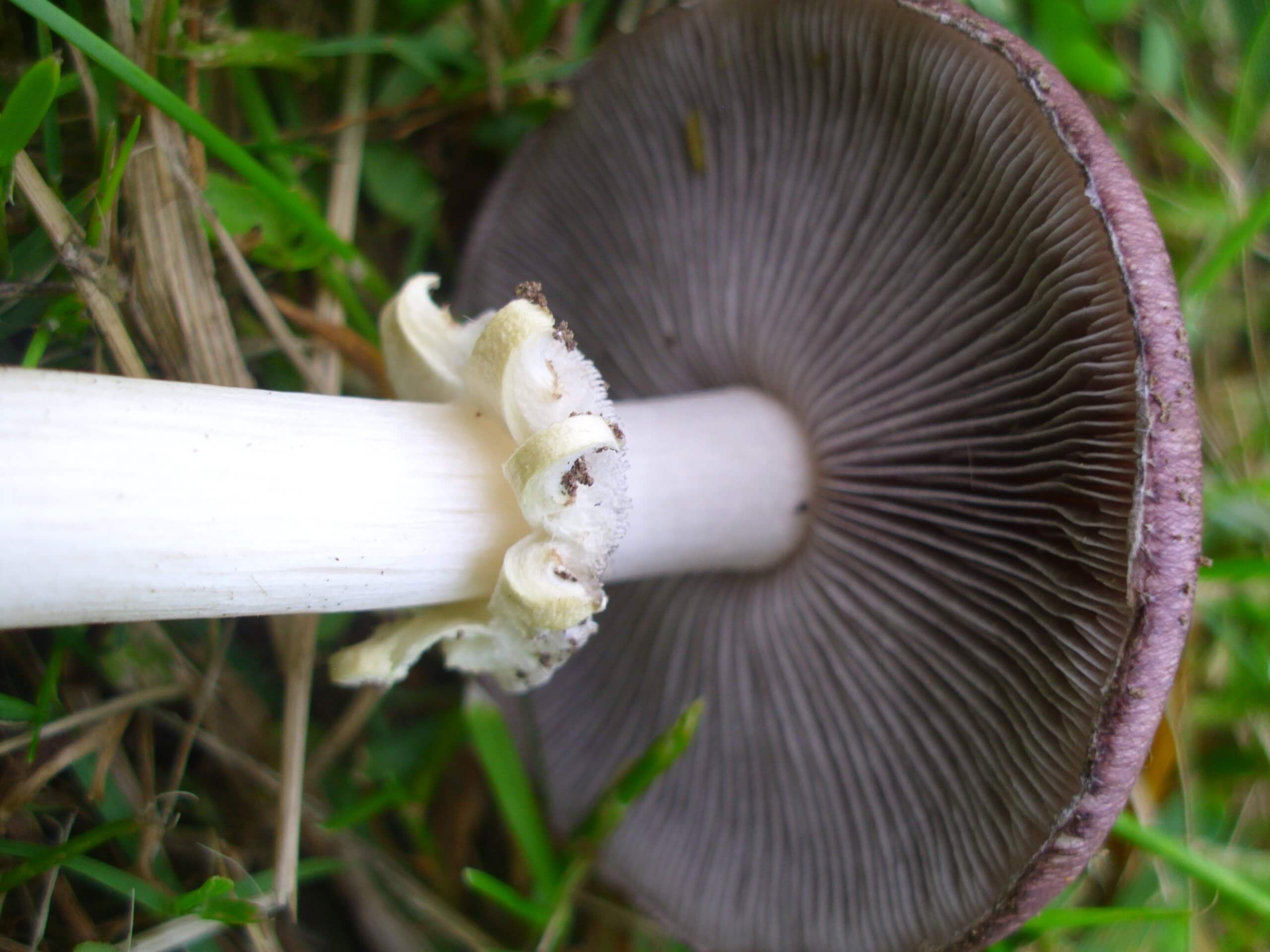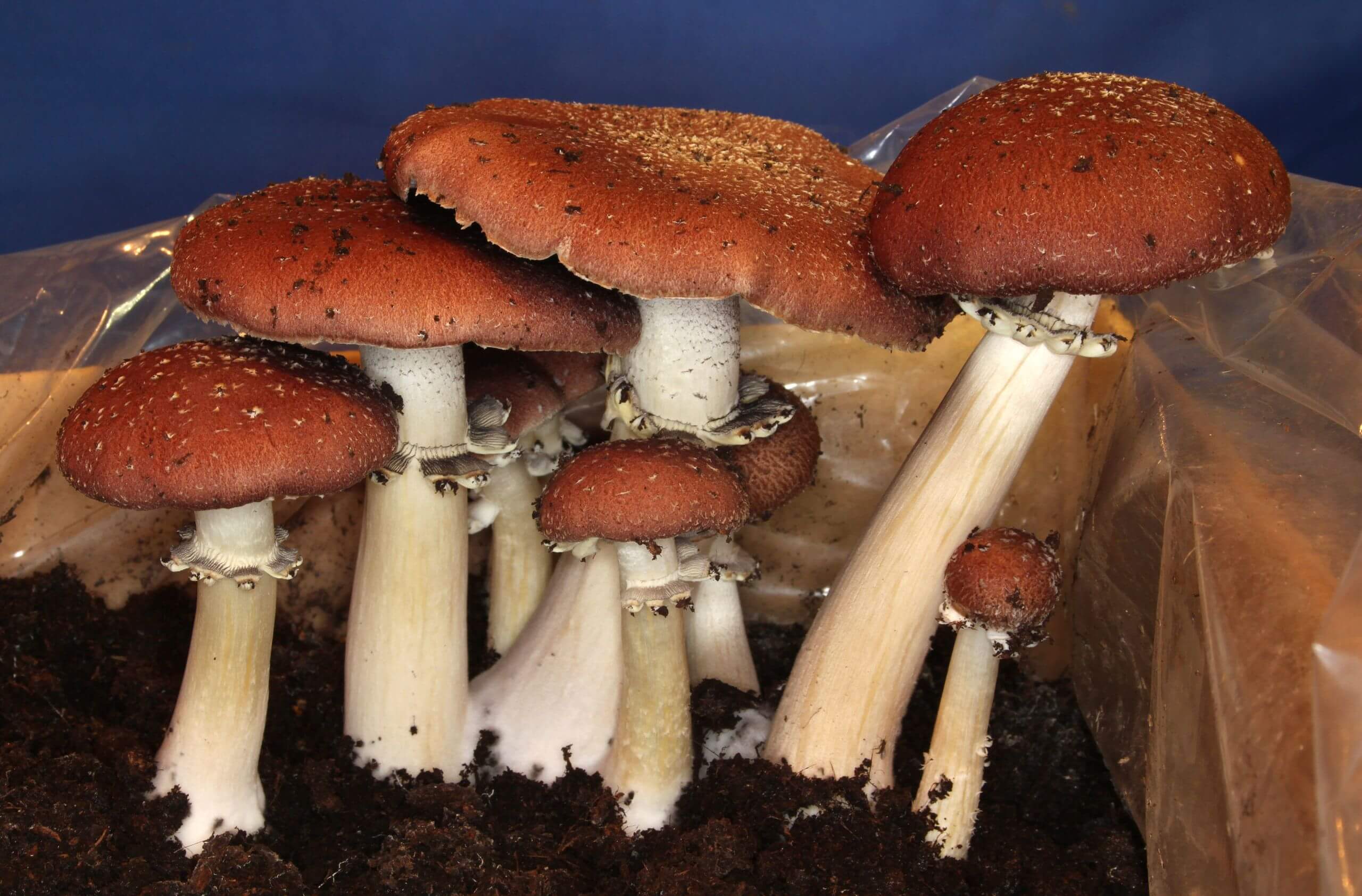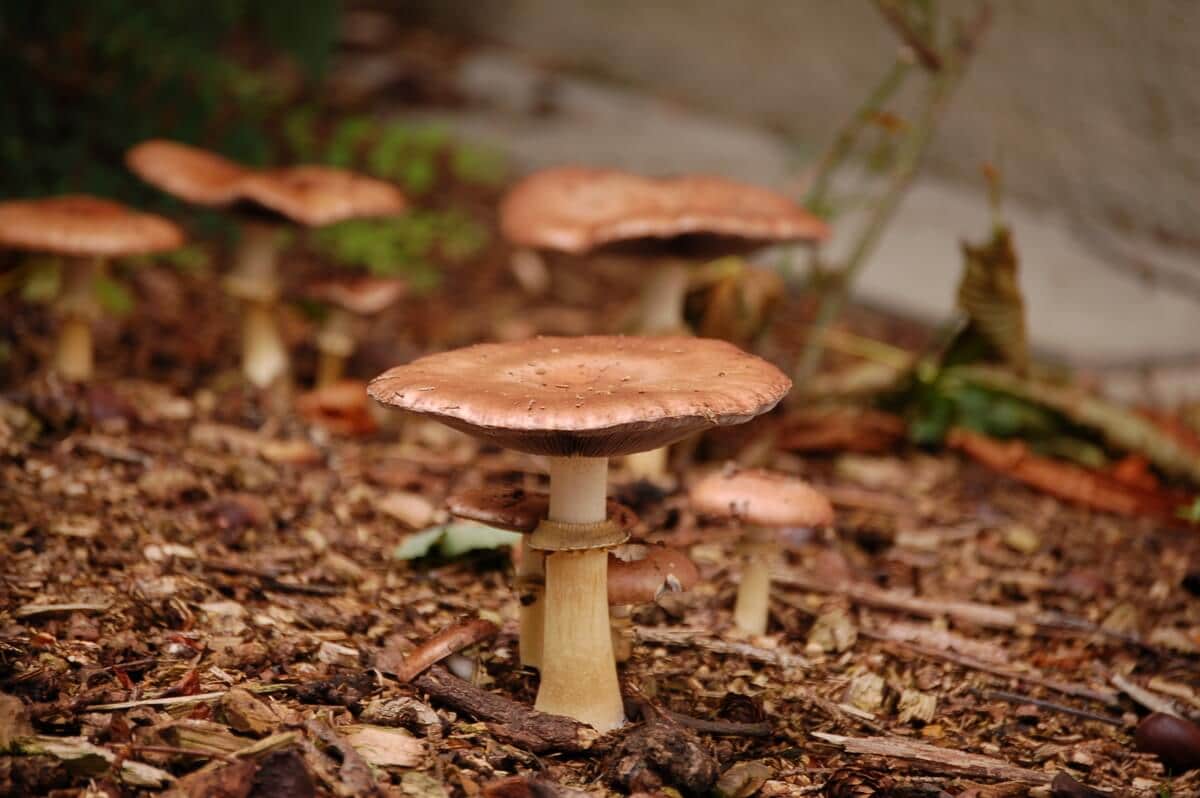The wine cap mushroom (Stropharia rugosoannulata), can be a fairly common find on forest and woodland walks. You’ll find them growing throughout Europe and North America, but they have now also become established as an invasive species within Australasia. Interestingly, they grow particularly well in one specific habitat.
Most mushrooms favor the growing conditions of mulches and ground covered in rich organic detritus. But wine cap mushrooms have a particular preference for wood chips. As a result, they can be a common find around forestry areas, where wood debris is often on the ground. Because of its preference for wood chips, you may also find it growing on mulches in the borders of gardens or even urban parks.

It’s possible that you know these mushrooms by another colloquial name. For example, wine roundhead, king stropharia, the burgundy mushroom, garden giant, and perhaps even the ‘Godzilla mushroom’ by some. As with most common names, they really help to identify important characteristics of the species. The ‘wine’ and ‘burgundy’ names hint at the deep red coloring that these mushrooms are so well known for. And ‘giant’, ‘Godzilla’ and ‘king’ signifying the great sizes that they can reach as they mature.
How to Identify Wine Cap Mushrooms
They are a member of the agaric family, like the bold and highly recognizable Fly Agaric (Amanita muscaria). This means they have the characteristic stalk and wide cap, with gills on the underside. Identifying wine cap mushrooms is easier in recently emerged and younger specimens.
The fruiting body emerges as a flush, wine red color with a bright white stalk. A wrinkled collar sits around the stalk just under the cap and is a unique feature. However, as the mushroom develops, the bright coloring of the cap soon fades to a soft pale, brown color as the cap widens and flattens. The gills are a deep, dusky purple to gray color, and are another colored feature that can help you to identify wine cap mushrooms. If exposed to the sun for a long period of time, the cap fades to an almost white color and tends to crack.

As its colloquial names suggest, wine cap mushrooms are a large species, with some caps reaching up to 30cm across. With such a large size, some specimens have been recorded as weighing up to 4 pounds! If they’re growing on wood debris or wood chips, it’s highly likely that you’ve come across a patch of wine cap mushrooms. Although of course, correct identification is still needed.
History of Wine Cap Mushrooms
Within certain areas of Europe, wine cap mushrooms were once cultivated alongside corn as a companion plant. It was believed to nourish the soil with additional nutrients that could benefit the corn. Wine cap mushrooms are still commercially cultivated today and can be found in some farmer’s markets.
Tips for Foraging Wine Cap Mushrooms
The best time to forage for wine cap mushrooms is from spring through the summer and into the autumn months. They tend to grow in large groups, so it should be easy to collect enough for a substantial meal. Particularly as they are large in size too! With sizes of up to 30cm, some are quite literally the size of dinner plates.
Because of the wine cap’s preference for wood chips as a growing medium, it’s easy to grow your own mushrooms at home. Not only are they tasty, but as with most mushrooms, they can improve soil quality too. They help in breaking down organic material and converting it into a good array of nutrients that benefit plants.

Eating and Preparing Wine Cap Mushrooms
With a little caution and preparation, wine cap mushrooms can be a tasty wild edible. They can be cooked and prepared like any other mushroom. The flavoring is described as rich and earthy, but unimposing. The perfect flavor accompaniment to rich meats, risotto or even just as a tasty side dish on their own. Check out this brilliant wine cap mushroom recipe, for an amazing pasta dish! Like with most mushrooms, they can be extremely versatile. You can easily store them in the refrigerator for a number of days, to be used as and when you need them.
Cautions to Consider
Deadly mushrooms such as the death cap, may superficially resemble wine caps at certain stages in their life cycle. When foraging any wild mushroom species, it is extremely important to be able to identify them with certainty. Whilst wine cap mushrooms are generally quite easy to identify when young due to their coloring, and well-known and usual habitat of wood chips. As their color begins to fade as they mature, it can become harder to correctly identify the specimen before you. It is therefore recommended to only forage for mushrooms if you are confident in correctly distinguishing between different species.
Did You Know…
Recent studies have concluded that wine cap mushrooms have the ability to consume a number of nematode species whilst also greatly improving soil health. In particular, the pinewood nematode can pose a serious threat to some conifer forests. Scientists are still uncovering all the amazing roles that they could play as a non-invasive and organic pesticide.

The wine cap mushroom is a well-adapted species that exhibits the amazing scientific potential and benefits that some fungi species have to offer. When found it is also an abundant and brilliant wild edible to collect and cook with. If you have a garden, why not try growing and cultivating your own supply at home? You can easily find wood chips and sawdust online that has been inoculated with wine cap mushroom spores. They can provide a nutritious boost to your garden soil, and also provide you with tasty mushrooms that you can easily collect from the garden! They are incredibly easy and effortless to grow at home if you have any apprehension about foraging them from the wild.
—————Written by Hannah Sweet
Hannah is a freelance writer and graphic designer from the UK. With a penchant for travelling, photography and all things botanical, she enjoys writing about a wealth of topics and issues, from conservation and slow living, to design and travel. Learn more about her writing and design services at www.sweetmeanders.co
Many of our readers find that subscribing to Eat The Planet is the best way to make sure they don't miss any of our valuable information about wild edibles.
See our privacy policy for more information about ads on this site






